| |
4 - Dedicated pedestrian crossings
Where it is not possible to provide expansive space for pedestrians close to motorized traffic, or where fast moving traffic meets slow traffic in a narrow space, the environment should protect the slow moving traffic. In figure 7 a choice has been made to allow permanent pedestrian traffic on either side of the bridge. The space necessary for this has been gained by reducing the space for the cars to one lane that switches direction with the help of traffic lights.
|
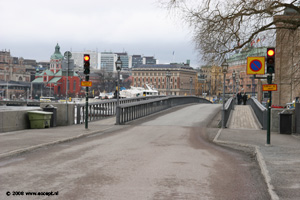
fig 7. Dedicated pedestrian bridge sections
|
| 5 - Daily amenities within walking distance
Shopping and public transportation don’t go as well together as shopping and automobile use, but if one can do the daily necessary rounds without a car, that is usually preferred over both. The phenomenon of the strip mall in the United States is the perfect example of what is not desired. Often it is not even possible to walk from one shop to another in these areas. If one has smaller but a multitude of stores within walking distance from one’s house, this would encourage leaving the car for what it is.
In dense cities it is of vital importance to have these amenities close by, and this is recognized even in American cities where the deli of the corner shop still exists where the density allows. But these stores do not carry all daily necessities and for a supermarket one soon has to look at some form of motorized transport. In Stockholm the daily requirements are satisfied by a large amount of 7-Eleven stores (fig 9), augmented with many small supermarkets that carry most one would desire on a monthly or even yearly basis. Permanent farmers markets provide a source for high quality affordable products from the land directly (fig 8), and these kinds of markets can be found all over Europe, predominantly mediterranean areas such as Spain and Italy. This makes owning a car for shopping purposes superfluous. Combined with ample opening times, easy access and limited to no parking make these stores ideal for the local pedestrianized city dweller. Making the store larger in favor of opening another store is also not financially attractive for the supermarket chains, because it will only draw the people that live within walking distance. More shops smaller in size are thus the result and what benefits a walking city.
|
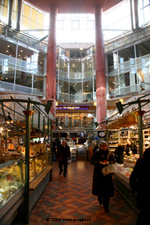
fig 8. Stockholm City Market.
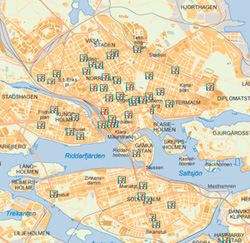
fig 9. 7-11 locations in Stockholm.
|
6 - Scaled park network
To alleviate the necessity to travel for light repose, a bit of peace of mind, a stroll through nature or to walk one's pet it is important cities to have a scaled park network. A small park close by for everyone, a larger park at reasonable distance, and an expansive natural area within fifteen minutes of travel. Children can meet and congregate in the small parks, and these can become important play hubs for the younger generations, and the parents do not need to accompany them due to the vicinity of the small parks. Stockholm has a three scale park network policy, where they are attempting to provide these services throughout the entire city. Whenever a new area opens up, and there is not sufficient open area space in that neighborhood, the city will rezone or even acquire these areas for park development.
The smart use of parks ranging from as ecological as possible with some accessibility to highly utilized such as the Woodland Cemetery park (fig 10) provide not only a source of utility besides entertainment, but also generate parks unlike any other, with unique characteristics, atmospheres and that appeal to different people to fulfill a broader need than just for the dedicated park lover.
|

fig 10. Woodlands Cemetery Park in Stockholm
|
7 - Sectional Change & Distance Assist
One of the biggest hurdles of public transportation is sectional changes. The threshold for making use of a metro system is significantly increased by how they are accessed, and how fast one can get on the metro, and what atmosphere this takes place in. In most Nordic countries such as Denmark, Sweden and Norway the threshold has been lowered considerably by making the metro stations as pleasant as possible. In Copenhagen one could say the stations feel like luxury hotel lobbies, as opposed to the dank, musky and filthy metro stations of most American cities (fig 11). The transition from surface level to under ground, or from one mode of public transport to another, is highly sensitive to the sectional changes one must go through. Escalators and elevators alleviate much of the effort involved, but they are not an ideal solution. Wherever possible one wants street level access, and this makes light rail often preferable to an underground solution.
Pedestrian movement can also been hampered by the minutest sectional details. Wherever the street has a ridge, sidewalk or hole, any normal pedestrian might not even notice, but when you are dragging a large suitcase, or have any disabilities, these small moments become huge obstacles. For people in wheelchairs there is an enormous difference in the ability to use a city such as Stockholm, where every edge has been considered and smoothed out, and New York, where even street block throws up new and hard to overcome problems, not in the least due to poor maintenance of what would otherwise be unproblematic sidewalk space.
|
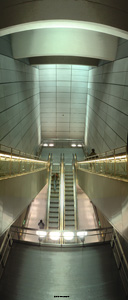 fig 11. Copenhagen Subway
fig 11. Copenhagen Subway |
8 - Second Generation Traffic Calming / Shared Street methodology
In the midst of nearly every transport and city planner falling over themselves to find a new technological solution for the improvement of traffic flow, the Dutch road traffic engineer Hans Monderman (1945-2008) took an entirely different approach. Reasoning from the perspective that once people make eye contact, a certain social norm needs to be maintained that without eye contact can be ignored. His traffic solution called Shared Space for inner cities encourage a mutual movement negotiation rather than rely on technical devices to regulate traffic for them. They are both remarkable and elegant and have proven in numerous occasions to improve traffic flow, reduce accidents, and improve quality of public space for all participants. “To make communities safer and more appealing, Mr. Monderman argues, you should first remove the traditional paraphernalia of their roads - the traffic lights and speed signs; the signs exhorting drivers to stop, slow down and merge; the center lines separating lanes from one another; even the speed bumps, speed-limit signs, bicycle lanes and pedestrian crossings. In his view, it is only when the road is made more dangerous, when drivers stop looking at signs and start looking at other people, that driving becomes safer.” writes Sarah Lyall of the New York times. Working on the principle that continuously but slow moving 20mph second generation traffic intersections that work on the basis of eye contact, which can be maintained at that speed, the throughput of an intersection is higher than of conventional first-generation traffic controlling devices such as traffic lights or stop-and-go solutions.
Questions rise as to the applicability of this kind of system are evident, but there has never been a fatal accident on any of Monderman’s roads or intersections (1), of which there are a great many. The city of Groningen has almost entirely adopted the idea of shared space, as well as Drachten, large portions of Delft and Amsterdam, This remarkable system rids us of all the devices that have come to accumulate on our streets that degrade the quality of space, and that is no small feat. In some cases additional interventions are necessary, such as a roundabout as an organizational shape for high volume intersections and so on. Shared space is the opposite of highways in that highways are a single purpose logistical artery with state controlled rules and requirements. It is not a space for social interaction, the way inner cities are, or ought to be. Shared space does not offer solutions for high speed interaction, but it does provide alternatives to high speed inner city intersections, namely by slowing them down and allowing an organic traffic negotiation between people to increase fluidity rather than having a mechanical, inefficient system. An organically organized intersection will use every square inch and every second to its benefit as the agents are intelligent enough to regulate such interactions, as long is their speed is more or less equal. Bicycles never have to stop, even on a 22.000 car per day intersection, pedestrians do not wait, cars move fluidly in and out of the stream as they seem fit. There is no honking, no swearing, in fact, people tend to greet each other and show civility rather than hostility, which is a remarkable sociological improvement of inner city life.
Shared space is achieved by careful inspection of the conditions that make up a certain space, and creating an even playing field for all participants. In some cases formal organizational tools such as roundabouts can be applied to assist in the flow of traffic, in other cases this is not desirable. These are not easy designs to make, but once executed correctly can provide a wealth of benefits for all participants.
More info on Shared Space can be found in this article by Ben Hamilton-Baillie.
|
sm.jpg)
fig 12. Typical Shared Space intersection: Photo Hamilton-Baillie (2)
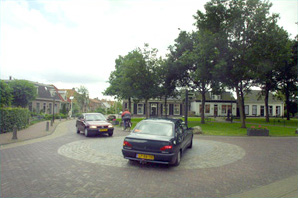
fig 13. Makkinga, Friesland, Inspired by
Hans Monderman, Makkinga was the first settlement to remove all road signs, markings and signals. Drivers appear to successfully read the village context and adapt accordingly.” (2) - Photo Andrew Burmann
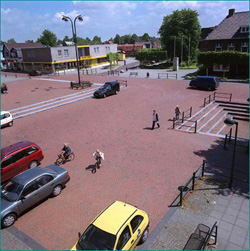
fig 14.“Oosterwolde, Friesland. “de Brink” A Hans Monderman scheme. No formal rules or priorities are necessary to allow this important part of the town’s public space to function well as a five-way traffic intersection.” (2) - Photo Sake Elzinga
|
Footnotes:
(1) -
http://www.ecoplan.org/wtpp/general/monderman-details.htm#bio, April 16 2008
(2) - Hamilton-Baillie Associates,
http://www.hamilton-baillie.co.uk/gallery/europe/netherlands.htm | |